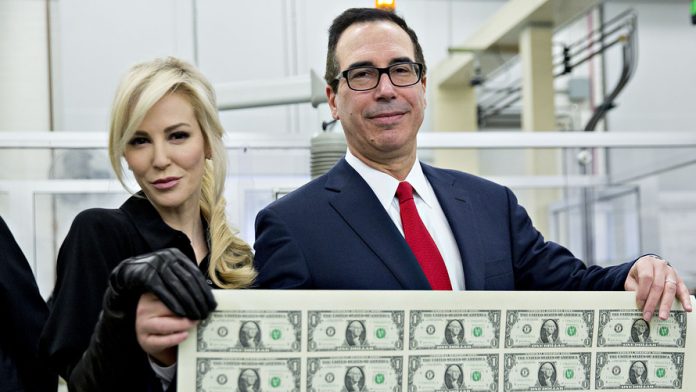As the U.S./China trade war continues, and the Chinese economy flounders, U.S. officials are thinking about lifting some pressure off a beleaguered Beijing. By scaling back tariffs and implementing a new approach, Xi Jinping and co. would be still be forced to make some long-term concessions.
But in doing so, they’d be saving China from a financial meltdown – something the United States never truly wanted in the first place. A tariff scale-back could also provide some much-needed relief to a bear market that looks ready to make its next plunge after a rollicking start to 2019.
The man who proposed the idea to advance the trade talks in this manner, Treasury Secretary Steven Mnuchin, came up with the plan in a series of strategy meetings according to witnesses involved in the deliberations. Mnuchin’s goal is to repair relationships with the Chinese, both politically and economically, and to draw up their terms of surrender – a plan that includes several longer-term reforms.
U.S. Trade Representative Robert Lighthizer, however, disagrees. According to people close to the meetings, Lighthizer believes that any concession (on the part of the United States) could be seen as a major sign of weakness.
He’s not wrong at all in that regard, especially as Democrats attempt to rattle President Trump’s cage at every turn. But as American dominance has been clearly established in the trade war, it might be time to consider endgame scenarios that don’t involve the complete destruction of the Far East.
The talks between Mnuchin and Lighthizer haven’t reached the President yet, and in the past, he’s typically sided with Lighthizer on tariff decisions. Recently, however, Trump’s made it very clear that he wants a deal made with China, and if Mnuchin is the man to do it, he’ll likely have full support from the Oval Office – even if historically, Lighthizer has led the trade talks.
If a deal cannot be struck ahead of the March 1st deadline, however, at 12:01 am the following day, tariffs on over $200 billion worth of Chinese goods are set to increase 150%, from the current 10% to 25%. While U.S. importers would certainly be affected, the already weak Chinese economy would be absolutely battered by the duty hike.
Preceding the March 1st “doomsday” trigger is a January 30th meeting in Washington, which could ultimately provide to be a much more significant date, as discussions between top Chinese trade representative Lieu He and U.S. officials are set to take place a month ahead of “T-day” (tariff day).
Even if those talks go well, though, it might still not be enough to convince Lighthizer, who has reservations about whether the Chinese will actually fulfill their end of the bargain – something they’ve failed to do on multiple occasions in the past.
His normally tough, hard-lined demeanor has changed slightly over the past few meetings with Chinese, however, and due to the President’s wishes to strike a deal ahead of the March 1st deadline, it looks like January 30th might be the first of many trade war “micro-truces”.
“I think we’re going to be able to do a deal with China,” said President Trump on Monday. As of this morning, it seems investors feel the same way, as evidenced by the Dow’s 162-point rise at the open.
Even with all this good news, however, the market – which is still a bear market, by the way – appears overbought, and all the optimism in China might not be enough to save investors from another big dip at the first sign of trouble.








